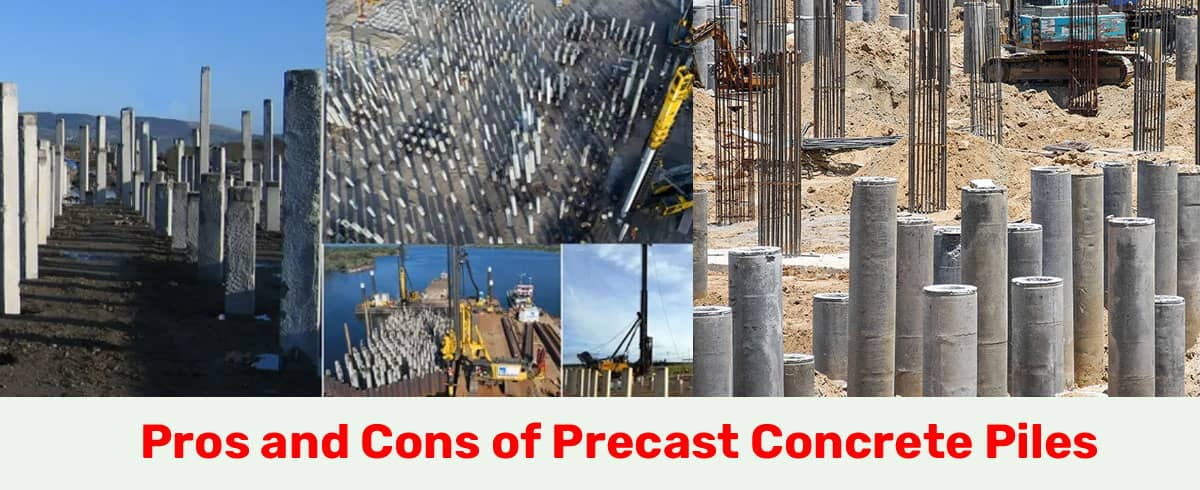Pros and Cons of Precast Concrete Piles

The maximum common kind of them, a precast concrete pile is a deep foundation used to switch loads from a top, soft layer of soil to a hardar, succesful decrease layer. They may be square, rectangular, round or polygonal in shape. Extra reinforcements are supplied in the concrete with a view to provide guide for the forces acquired earlier than the instalent.
The precast concrete piles are constructed in a casting yard. Then they're transported to the specified location and installed as necessary. They're constructed with the aid of pouring the concrete in a traditional reinforcement cage. This has numerous metal bars in horizontal and vertical positions, held together by using man or woman or spiral ties.
Types of Precast Concrete Piles
There are two main categories into which we can divide:
Driven Precast Concrete Piles
It is precast in a construction yard and then hammered into the soft ground at the target location. At most they can go up to 40 feet deep.
Bored Precast Concrete Piles
After they are made in the construction yard, they are transferred to the target location. The location already has boreholes for the piles; they are just lowered into these holes. Any space remaining between the bore hole and the pile is grouted.
Difference between the Driven and Bored Precast Concrete Piles
- Bored piles are better in urban locations since they avoid the noise and vibrations caused by vibrators.
- The bore hole can be as deep as necessary, or as deep as the machinery can go. Unlike driven piles, the bore piles have no depth limit.
- Driven piles can be established quickly.
- Driven piles can be easily used underwater.
The good and the bad about Precast Concrete Piles.
Advantages
- Increases the bearing capacity of the soil
- Flexible in sizes and shapes
- Faster to produce due to standardized manufacture
- Faster project progression when piles available
- Reinforcements stay in the same position
- Can be driven underwater
- No need to wait for pile to mature
- Building structures beside does not disturb them
- Highly resistant to corrosive effects
- No waste generation
- Very economic
- Can withstand high tension loads
Disadvantages
- Heavy weight requires specialized equipment and infrastructure
- Need to be careful while transporting
- Driven precast concrete piles require specialized machinery to drive them
- Requires extra reinforcements to withstand transportation strain
- Size of the piles are limited by transport ability and construction yard
- Cannot change anything in the field
- Difficult nd uneconomical to cut the pile
- Not available on short notice
Important information to be kept in mind
- The Precast concrete piles can be up to 20 meters long only. To increase the length of the structure, two or more piles need to be joined together.
- In case of driven piles, additional reinforcements need to be provided in order to withstand the hammering.
- You must use M25 grade concrete to make Precast concrete piles.
- Site investigation needs to be carried out according to IS 1892.
- Chemical properties of the soil needs to be analysed and countered accordingly when manufacturing the piles.
- Design of driven piles should conform to IS 2911 1.3 and bored piles should conform IS 2911 1.4.
